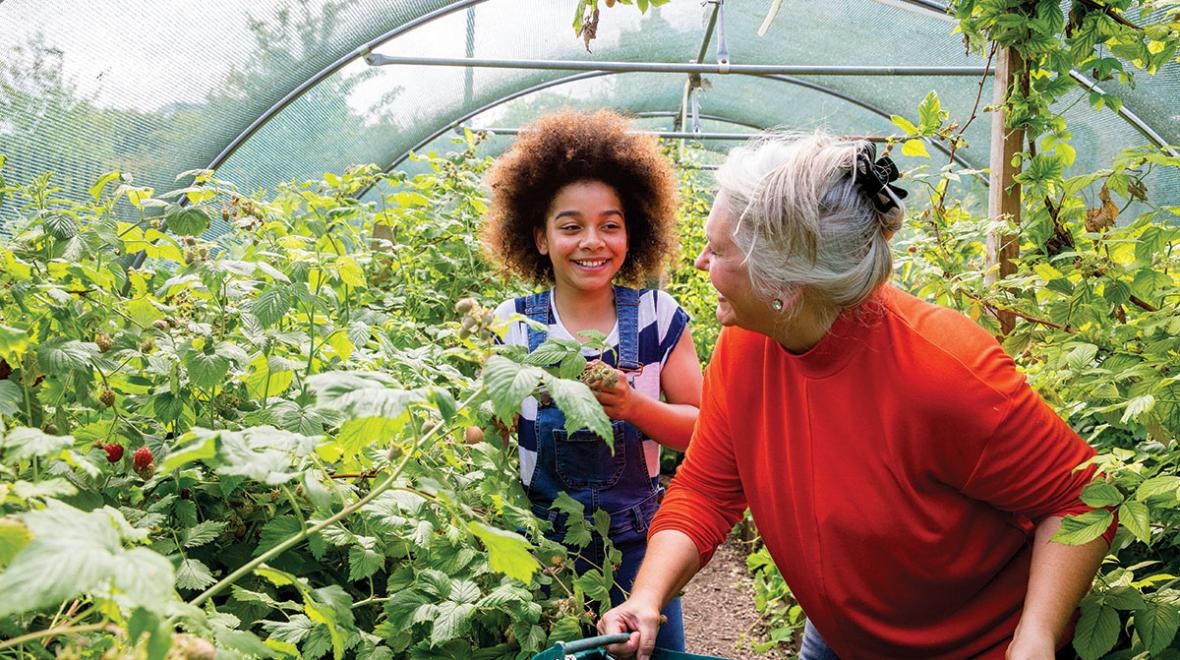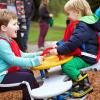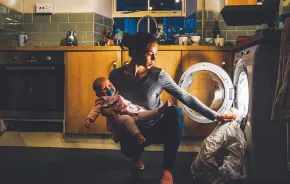
Raising kids to be empathetic and generous is not always an easy process, but the rewards can be profound. Not only does the external community benefit, so does the individual.
“There have been studies that show changes in the brain when we are connected to something larger than ourselves,” says Sarina Behar Natkin, a family therapist and parenting coach in Seattle. “We feel as though we matter.”
But how do we help kids develop these values? For Natkin, the primary key is being aware of what your kids see you do. “Be mindful of what you are modeling,” she says.
That’s an important lesson that applies to all stages of development. Here are some other considerations.
Preschool
“You want your children’s first experience of philanthropy to be joyful,” says Carol Weisman, author of “Raising Charitable Children” and an international speaker on volunteerism. “A child might not be ready to donate something he doesn’t use anymore but still feels attached to. Then he’s associating giving with loss instead of love.”
Generosity at the preschool age doesn’t have to be through an official charity, but it does require an understanding of what motivates children. If a child is excited by fire trucks, for instance, try making brownies and taking her to the fire station. “The trip to the station could be part of the child’s birthday present,” Weisman says.
Sometimes the philanthropic payoff shows up at a later stage. For instance, when Maren Van Nostrand realized that her daughter, Julia Ricks, was fascinated by bugs as a young child, she encouraged Julia’s natural curiosity to explore their yard in Carnation. “When she was collecting bugs, she was relating to them,” Van Nostrand says, adding that Julia’s next major interest — this time, guinea pigs — led to Julia joining 4-H and becoming a four-time state champion.
More important than the awards, 4-H bolstered a community-service ethos that goes back generations in Julia’s family. Indeed, family stories — in Julia’s case, about relatives who raised money for the YMCA or marched with Martin Luther King Jr. — can become touchstones for developing compassion. Now 18, Julia has participated in a number of volunteer activities, including helping out at Oxbow Farm and Conservation Center in the Snoqualmie Valley and bicycling with her parents in the Bike MS fundraiser.
But don’t worry if that’s not your family’s history. Small, everyday acts count. Young children can learn that even helping to clear the table is a way to contribute. They also might draw pictures for a sick relative, go on short visits to a senior center or help make sandwiches for a homeless shelter. In the process, you can tell kids your own stories about why you chose a specific charity or where you spent time volunteering.
In fact, talking with young children about such values is in many ways more essential than taking them on an actual outing. Both Natkin and Weisman warn against signing up preschoolers for extended activities, exposing them to settings that might be beyond their comprehension or expecting them to learn lessons overnight. “These qualities are not built on one interaction,” Natkin says. “It’s such a scaffolding process with these big values.”
Elementary
By the time kids enter elementary school, their brains are more adept at distinguishing others’ feelings. “Changes in the brain that occur around age 4 allow children to understand that other people’s thoughts and feelings are different from their own,” Natkin explains. “This is a key piece of developing empathy. As the brain continues to develop, the ability to pick up on body language, tone and emotions of others continues to grow.”
Depending on the child, some kids might be ready for longer volunteer activities outside the home. Plus, as they progress in school and join clubs, such as Cub Scouts or Campfire, they will often be asked to participate in raising money. “What’s interesting about this age is that they’re always being asked to sell stuff,” Weisman says. “It’s not a bad skill to have.”
With thoughtful discussion, elementary-age kids can also begin to process some of the larger questions surrounding philanthropic work: Why are these people homeless? What can we do to help them? “You have to be careful to debrief children frequently when you take them on something like a mission trip, whether it’s downtown or around the world,” Weisman says. “What they see can be stressful as well as poignant.”
Parents can help kids reflect on the sadness of a situation and build on the conversation. “The act of doing something is often the remedy to feeling lost in a harsh world,” Natkin says. “It’s a chance to connect kids to the resilience of the human spirit.”
Allowing kids to have a voice in where and how often the family participates in volunteer work helps, too. Parents might also consider participating with another family. “With Julia, if other kids were doing it, she would want to do it, too,” says Byron Ricks, Julia’s dad.
Tweens and teens
As Natkin reminds us, one of the challenges of this age is that it’s the kid’s job to separate. “You need to allow for that space,” she says. “If they’re interested in helping with rescue pets at the animal shelter but not with you, by all means let them do it.”
Don’t get hung up on eye rolls or negativity, she adds. “That’s just on the outside,” Natkin says. “There’s still something happening on the inside.”
This is an age when kids zero in on the behavior and language of their parents. If you don’t make eye contact with people asking for money on the street, they’ll notice. If you make judgments in your language, they’ll notice. “If you’re not modeling generous behavior, don’t expect them to do so because they’ll call you on it,” Natkin says.
Teens can have an intense sense of justice when it comes to family requirements, including chores, but it doesn’t mean those requirements should be ignored. As Natkin explains, parents still have a window of opportunity to influence their kids before they become adults.
As Weisman points out, for much of their lives, kids are asked what they want to be when they grow up. Weisman prefers to ask a different question: “Who do you want to be?” It’s a question that speaks directly to the values we wish to pass on to our children. It also highlights the difference between a career and a calling.
Volunteer ideas for all agesPreschool Northwest Harvest offers two volunteer opportunities that kids younger than the age of 6 can do from home. The first: Make thank-you posters to hang in Northwest Harvest’s warehouses. You’ll need to provide your own materials, preregister the projects and follow the detailed instructions. The second: Host a food drive at home. Create a theme or a party and have your kids help plan the festivities. In some cases, Northwest Harvest will pick up the food once the collection is complete. Elementary There’s nothing like digging in the dirt when you’re a kid. United Way King County offers a variety of volunteer opportunities that help restore local trails, parks, wetlands and forested areas. Your family can even learn about native plants by helping out at the King Conservation District native plant nursery in Renton, which is where many of the plants used in regional restoration projects get their start. Training and gloves are provided, but bring sturdy, close-toed shoes or boots. Tweens and teens If your older kids are animal lovers, Purrfect Pals, which coordinates with area pet stores, needs volunteers who are at least 14 to help care for cats awaiting adoption. Little Bit, a therapeutic riding center in Redmond, needs volunteers (also 14 and older) to help prepare horses before classes. Or kids 13–17 can become involved in animal welfare work through the Seattle Humane Teen Club. |











